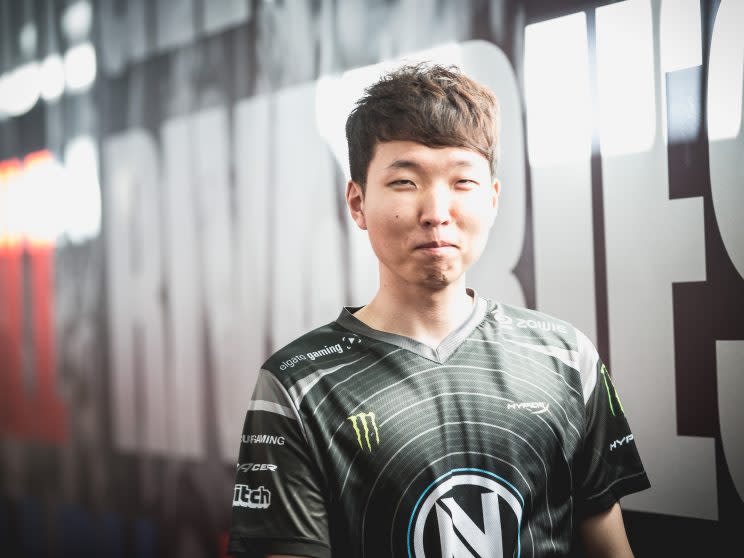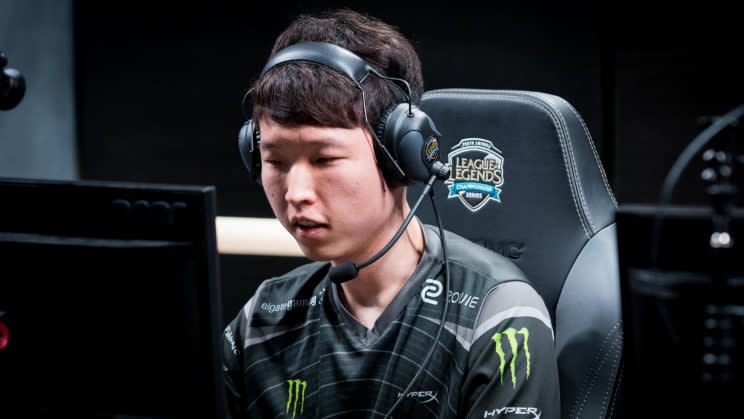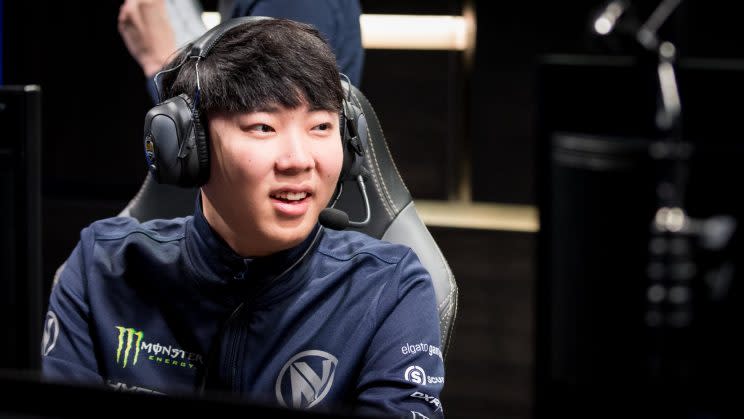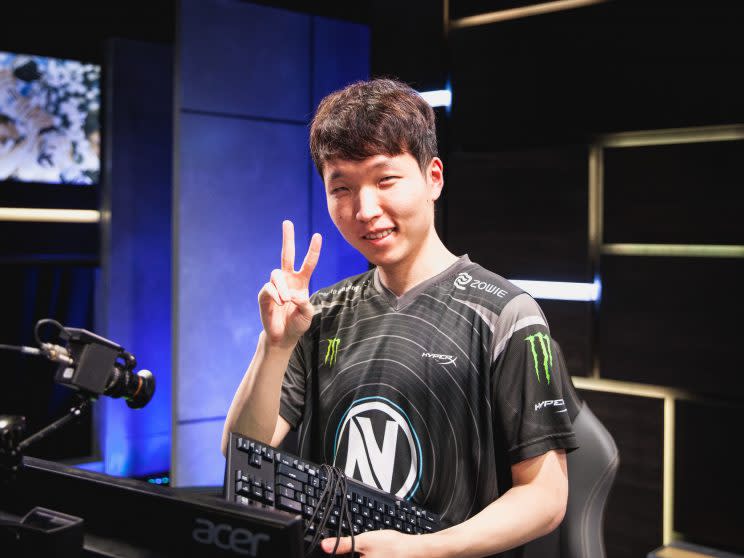The curious case of nV LirA and the 2017 NA LCS Spring Split

The game has changed. It’s not what it used to be.
One player used to be able to carry a League of Legends team. Now, it’s impossible.
These words become a mantra when one player rises above the rest, yet his team still languishes at the bottom of the standings.
Discerning how much a team affects a League player’s statistics and in-game performance has become increasingly difficult through the years. The assertion that the game has changed to become more team-oriented and less about individual play is not controversial, it’s simply a summation of the path that Riot Games has purposefully taken — a resistance to the natural avulsion of individual play, diverting to teamwork instead.
Individual standouts aren’t impossible to find, they’re just more difficult to evaluate. How much the team influences a player’s visibly strong season — the SK Telecom T1 Lee “Faker” Sang-hyeok effect — is always rife with debate. With LoL’s increasing focus on the unit of five, it should be. This is a debate worth having.
And there may be no better example of the strain between individual greatness and team success than Nam “LirA” Tae-yoo, the best jungler in the 2017 North American League Championship Series Spring Split. It’s not even close.
He was also on the last-place team of the regular season, Team EnVyUs.

The curious case of nV LirA
Leads all NA junglers in First Blood percentage (49 percent).
Leads all NA junglers in gold differential at ten minutes (271).
Leads all NA junglers in CS differential at ten minutes (8.0).
Leads all NA junglers in CS per minute (5.8).
Leads all NA junglers in earned gold per minute (235.9).
Rarely do statistics so succinctly reflect an individual’s in-game prowess. Statistics require context. That context usually involves another player on the team behind the scenes. Pay no attention to the Faker behind the curtain.
LirA’s 2017 NA LCS Spring performance challenges the boundary between individual and team play and how we perceive both. It’s not unheard of that a player from a lower-tier team will have a strong regular season showing. If anything, an abysmal team will make a strong player more visible.
nV aren’t an abysmal team. They’re disorganized and tend to fall apart in the mid game, despite strong starts from LirA that, on average, gave them a 513 gold differential at 15 minutes. Only Echo Fox and Immortals were higher, and they too possessed strong early-game junglers who have the ability to dictate pace in Matthew “Akaadian” Higginbotham and Joshua “Dardoch” Hartnett.
All three teams finished outside playoff contention.
Team EnVyUs slid to the last-place spot and recently underwent the grueling task of earning back their spot in the LCS, playing 13 games across three series this weekend. Throughout the series, nV struggled with their mid-game lane assignments, mid-game decision making, and a host of other problems that had less to do with individuals and more to do with team communication.

The mystery of nV
For LirA, most things come back to communication and playing time.
“The fact that we had visa issues [early in the split] was really rough, and it was hard for me when I came back,” LirA told Yahoo Esports.
“After the two weeks, travel issues, and not being able to play with the team — I couldn’t communicate well because I don’t speak English that much. I started catching up and we started getting better but, the thing is, all of the other teams had already practiced together and had good synergy together.”
Those first two weeks of lost practice had an irrevocable effect on nV. LirA often blames himself due to his lack of English. He sat, dwarfed by the press room armchair, exhausted and nervously wringing his hands while reiterating his desire to improve at playing with his team, speaking English, and learning how to communicate with fans and teammates alike. There’s a sense that he’s just not quite comfortable yet.
“The first thing I noticed were the fans. In Korea I can actually communicate with fans,” LirA said. “I can really talk to a lot of fans about the game. Here, the format is kind of hard for me to talk to fans, also I don’t really speak English so it’s hard for me. NA LCS is much more free. In Korea you have to play a lot of solo queue because solo queue is much stronger. You have to try really hard…here, I also try hard but I have a lot of time to enjoy myself and spend time with my team hanging out.”
It’s easy to say that, with better communication, nV would have been a far stronger team. They would have been able to turn LirA’s early advantages, which included kills and assists for his laners, into objectives. One of the more frustrating occurrences to watch in nV games this split was their inability to use gold leads, farm leads, or kill leads effectively.
This problem isn’t exclusive to nV. The gap between nV and their closest competitors in the standings — Team Liquid, Echo Fox, and Immortals — isn’t that large in terms of record.
“Obviously we were in the promotion tournament so this was a long season for us.” LirA admitted. “A lot has happened and I haven’t really had time to think outside of practice. One of the reasons why I came to America, to the NA LCS, is because I want to join a good team, have a better environment, and win Worlds, so I want to work really hard for it.”
“We know our problems. All the players know their mistakes. As long as we fix that during the offseason we will be one of the top teams.”
Of all North American teams this spring, nV played the third-highest amount of games. Only Team SoloMid and Team Liquid played more. Even if they lost, nV usually made their opponents hurt. Nothing exemplified this better than their final match of the regular season. Saddled with the last-place spot in the league and guaranteed promotion, nV had little to play for but their own pride and improvement. Counter Logic Gaming may have defeated nV 2-1 that Sunday, but nV fought them every step of the way, including a Game 3 hour-long slugfest.
Their route through the promotion tournament was similarly arduous. nV played 13 of 15 possible games, coming nearly as close as a team can to being relegated from the league.
“I was actually really nervous,” LirA said after the 3-2 win over Gold Coin United that secured nV’s LCS spot. “I’m feeling good right now but as you know, we had a really rough season but we’re back into the LCS again and I think we can do a lot this summer split.”

The mystery of perception and team value
The shadow of the season, and the promotion tournament, looms over LirA’s accomplishments this split. The perception of what a player does for their team is always hotly debated.
Yet LirA’s unique position calls into question the idea of value in a “Most Valuable Player” conversation. A common thread in any MVP discussion is where a team would be without a specific player.
Where would nV be without LirA? With LirA, they still finished in last place. There’s no place after last and if LirA was such a fantastic player, surely he would have carried nV out of relegations, right?
When LirA speaks of minutiae like item builds — his tank Kha’zix against GCU’s Lucas “Santorin” Larsen raised more than a few eyebrows, as did his Week 8 AD/tank jungle Nidalee against Cloud9 — it always comes back to the team.
“I always think before I build,” he said, citing scrim results, enemy team compositions and nV’s own penchant for playing AP Ziggs bot while drafting AD mids like Talon and Jayce for Noh “Ninja” Geon-woo. Everything is always in service of the team.
One player can’t often carry a team. LirA tried, and he did so without much of the innate selfishness that comes with being a primary carry. In fact, he wasn’t a damage carry at all. Of all NA junglers, he did the third-least amount of damage per minute (319) and did only 17 percent of his team’s total damage, tied with CLG’s Jake “Xmithie” Puchero in the middle of the pack. His gold often went to tankier builds so that top laner Shin “Seraph” Woo-yeong could play the likes of Camille, Rumble, and Renekton.
It’s easy to tell LirA to find a better team, but that doesn’t address the myriad of factors that make up a nV’s performance as a unit.
One person used to be able to carry a team, now it’s impossible.
The LCS Arena was nearly empty during nV’s promotion series against GCU. Rows of seats were peppered sparingly with coaches and staff members of other teams, a few LCS diehard fans, and parents or other family members.
Few people were in the live audience to see one of the greatest moments of NA LoL this year.
At 36:43, GCU top laner Colin “Solo” Earnst on Nautilus positioned forward, catching LirA’s Sonic Waves in front of GCU’s bottom inhibitor. When Solo was sent topside to deal with an incoming minion wave, LirA struck. Using Sonic Wave and Resonating Strike, he dashed onto Santorin’s Graves.
Yet Santorin wasn’t his final target. Ward hopping and then Flashing onto Kim “Fenix” Jae-hoon’s Orianna, he locked up Fenix, killing off the possibility of Command Shockwave that had previously kept nV at bay. It was a play that took foresight, mechanical skill, and instinct.
It was the game-winning play that let nV back into the LCS.
It was met with a smattering of applause. Most of the audience, GCU supporters, had already left.
All statistics from Oracle’s Elixir.
Emily Rand’s love of the 2013 KT Rolster Bullets will never die. You can follow her on Twitter @leagueofemily


